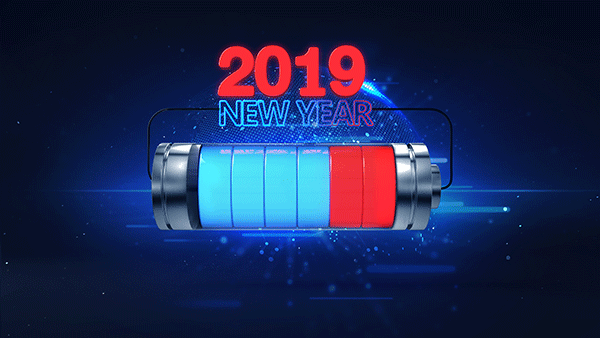How much do you know about lithium battery adapter?
Aug 24, 2019 Pageview:1164
Introduction
Lithium-based batteries are a type of rechargeable batteries that offer a versatile way of storing energy. They have great high energy density which makes them the preferred choice in most consumer electronics. Lithium batteries are charged manually with a power supply featuring user-adjustable voltage and current. The reason for charging lithium batteries manually is because they need to be charged with current limiting.?If there is unregulated access to current, the batteries may get hot and potentially catch fire. The lithium battery adapter does not connect to the battery directly. This is because there is always a charging control circuit inside.
Lithium-ion cells are based on intercalation compounds, materials with a layered crystalline structure that allows lithium ions to migrate from, or reside between, the layers. When the lithium battery is discharging, ions move from the negative electrode through an electrolyte to the positive electrode. This movement of ions causes electrons to move in the opposite direction around the circuit to power the load. Once the ions in the negative electrode are used up, current stops flowing. Charging, on the other hand, forces the ions to move back through the electrolyte and embed themselves in the negative electrode waiting for the next discharge cycle.
What is a lithium battery adapter?
For you to charge your lithium battery, you need a lithium-ion battery charging module. With the battery module, you can charge either single or multiple lithium-ion batteries and this generally depends on the type of battery charger module you have picked.
Lithium battery adapter refers to any external power supply used by an electronic device. For instance, laptops use external power supplies to decrease the space used by components inside the case. This is because the smaller size is much more important to the portability of a laptop than it is to a desktop computer.
A lithium battery adapter is made up of a central unit which draws power from an AC outlet. It then converts the power to DC (direct current) used by an electronic device, such as a laptop, and a second cord that plugs into the computer.
An AC adapter has a specific power rating which is measured in volts or watts that it can handle and output to an electronic device. Due to the power rating and the type of plug on the end, an AC adapter is not universal, therefore, it can only be used with devices with the same requirements and connector.
All battery chargers have one thing in common: they work by feeding an electric current through batteries for a period of time such that the cells inside will hold on to some of the energy passing through them. The cheapest and low-quality chargers use either constant voltage or constant current and apply it to the lithium batteries until you switch them off. If you happen to forget to switch them off, you will overcharge the batteries, and if you take the charger off too soon you won’t charge them enough, so they will run flat more quickly. High-quality chargers use much gentler trickle charge for a much longer period of time.
Lithium batteries are usually built into various gadgets such as cell phones, laptops and digital cameras. Typically, they come with their own chargers or adapters, which can automatically sense when charging is complete and cut off the power supply just at the right time. Most lithium-ion batteries become unstable when the voltage of the battery is either too high or too low, therefore, they are designed not to operate under those conditions. If the voltage gets too low, the appliance should cut off automatically and if the voltage gets too high the charger will cut out instead. Lithium batteries do not have a memory effect, however, they degrade as they get older. One symptom of ageing is gradual discharge for a period of time followed by a sudden and completely unexpected cut-out of the appliance after that.
When do you need a lithium battery adapter?
Without a battery, you cannot use your expensive laptop or smartphone. Lithium batteries have a finite lifespan. Over time, they start losing power faster and taking longer to charge. To extend the battery’s useful life for as long as possible, you need to take care of your device properly.
To make your lithium-ion battery last as long as possible, you need to adopt shallow discharges and recharges and avoid full ones. This is because they put less stress on the battery, so it lasts longer. When your battery is discharging, you should only let it reach 40 per cent before recharging it. While you are recharging it, you should also avoid charging the battery all the way to 100 per cent. Lithium-ion batteries have built-in protection designed to prevent them from exploding if they are left charging while at maximum capacity. However, in the long term, the battery will age faster if it is constantly plugged in while already charged to maximum capacity.
There are several instances when you may need a lithium battery adapter. First, you will need your adapter when you’re charging a lithium battery. It is always important to use the right adapter for that specific battery to prevent excessive voltage or current being fed into the battery. The right adapter comes with the right rating either in voltage or watts.
You need an adapter when you are using your battery-powered device, such as a laptop, and have access to a power outlet. Plugging in the adapter to power to power the laptop is a good practice. In this scenario, the laptop battery will take advantage of the power outlet and will save the battery for situations when there is no power outlet available. Some companies claim that when using the adapter to power the laptop, you can leave the battery connected to the laptop. Others recommend removing the battery when you are using the adapter to power your laptop.
How to safely use lithium battery adapter?
When you’re using a lithium battery adapter, there is one important thing you should consider to ensure the safety of use.
You need to ensure that you are using the appropriate adapter that will provide the right voltage and current which is needed by the device. Other adapters may have different charging specifications that can result in overheating, explosion or even fire.
Most lithium-ion batteries are charged to 4.2V per cell, higher voltages could increase capacity, but this will reduce the service life of the battery. Lower voltages can increase battery charge cycles at the cost of less run time.
Conclusion
Lithium batteries are very important in our lives. We are able to use our laptops, cell phones and digital cameras among many other electronic devices wherever we are in the world. The lithium battery adapter is also important when it comes to charging our batteries. For the safety of use, you need to use an adapter that matches the voltage and current required by the battery of the electronic device.
- Prev Article: Talk about lipo battery storage box
- Next Article: Talk About Lithium Ion Battery Life Calculator
Leave Message
Hottest Categories
-
Hottest Industry News
-
Latest Industry News











